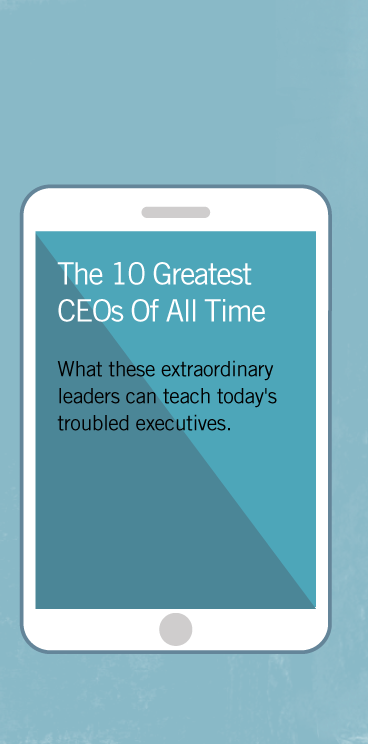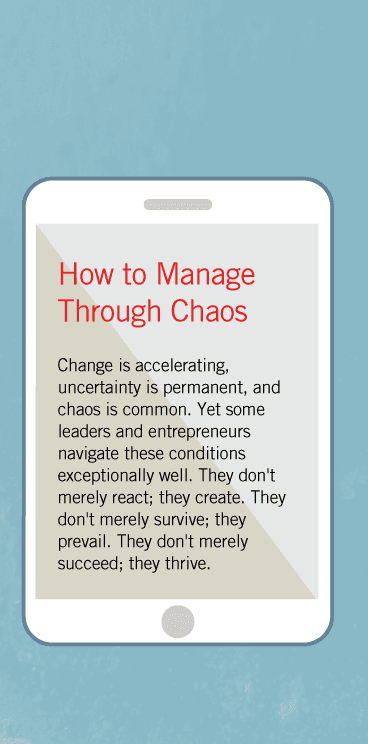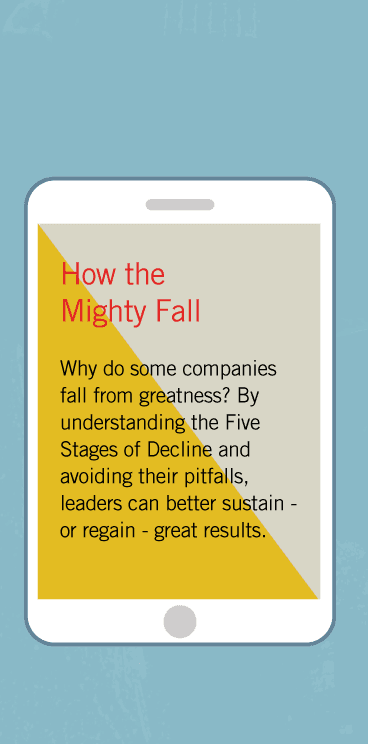Dream Big - Cristiane Correa
“In the end, I am a teacher; that is really how I see myself.” – Jorge Paulo Lemann
My relationship with this remarkable story began in the early 1990s in a classroom at the Stanford University Graduate School of Business. I was leading a case discussion for an executive program, on the topic of what it takes to build a great company to last. There, sitting in the front row, was an understated executive wearing simple chinos and a casual shirt, drawing no attention to himself. Then he perked up when I began to gesticulate wildly about Wal-Mart and invoking the entrepreneur Sam Walton as an example. I described how Walton crafted culture and built a great organization, and that this better explained Wal-Mart’s success than the notion of business strategy. I argued that Sam Walton was more of a “clock builder” and less of a pure “time teller,” and that he was building Wal-Mart so that it need not depend upon his own visionary genius and charismatic personality. The executive in the front row raised his hand and challenged me: “Well, I know Sam personally, and I disagree with you,” he said. “I think that Sam is central to Wal-Mart’s success, and his visionary genius has carried it a long way.”
“Yes,” I acknowledged, but then countered: “But don't you think that true greatness comes only when you’re able to build a company that can thrive far beyond any individual leader?”
We carried our discussion into the hallway, and I could see the executive was taken with the idea of enduring greatness, beyond any single generation of leadership. He asked me if I would be interested in coming down to Brazil to share my ideas with his two partners and his company. I did not know at that time that this fortuitous moment would turn into one of the most stimulating business friendships of my life.
The executive’s name was Jorge Paulo Lemann, his partners were Marcel Herrmann Telles and Carlos Alberto Sicupira, and their company was the investment bank Garantia. I didn’t know anything about them, so I asked a Brazilian MBA student of mine, “Hey, have you ever heard of these guys?” He looked at me like I was crazy, as if I was asking a question like: “Have you ever heard of Warren Buffett or Bill Gates or Steve Jobs?” He showed me an article on the investment bank, and told me the legend of how they assembled a team of young fanatics and built a tiny brokerage outfit into one of the great investment powerhouses in Latin America.
Then my MBA student added: “Oh, and they’re into the beer business now.”
“The beer business?” I thought to myself. “What on earth is an investment bank doing in the beer business?” If anyone would have told me then that these bankers had the dream to build the biggest beer company in the world, and to buy Anheuser-Busch along the way, I would have said, “That’s not a vision, that’s delusion.” Yet, of course, that’s exactly what they did.
I have now been acquainted with the company, its culture, and the three partners for nearly two decades, and have had the privilege to watch the development of this success story as it has unfolded in recent years. I believe the primary reason we became such good friends is that they deeply resonated with the question that has occupied my own intellectual curiosity over the same two decades: What does it take to build an enduring great company? When Jerry Porras and I published Built to Last in 1994, they instinctively gravitated towards the ideas, and in particular the big dream of making a great company that would indeed be built to last.
In the intervening two decades, I have learned much from them. Here in this preface, I would like to share the top 10 lessons I have gleaned from watching, teaching, and learning from their journey.
- Invest always—and above all—in people. The founders certainly have a strong dose of financial genius, but that is not the primary source of their success. From the very beginning, their primary investments have been in people, especially young and talented leaders. Their philosophy: Better to give talented (if unproven) people a chance, and endure a few disappointments along the way, than to not believe in people. The number one ingredient in their secret sauce is an obsession with getting the right people, investing in those people, challenging those people, building around those people, and watching those people experience the sheer joy and exhilaration of achieving a big dream together. And, just as important, stay with your proven people for a long time. It’s interesting to note that the three founders have worked together for four decades, and are as unified as ever. And many of the best young people they brought into this system have stayed passionately involved for decades, such as the current CEO Carlos Brito. They didn’t just get the right people on the bus; they got the right people on the bus for a very long time.
- Sustain momentum with a big dream. Great people need big things to do, or they will take their creative energies elsewhere. So, the founders built a two piston flywheel: First get great people; second, give them big things to do; then, get more great people, and come up with the next big thing to do; then repeat, again and again. This is how they sustained momentum over time. They always resonated with the idea of BHAGs – Big Hairy Audacious Goals—and built a culture to achieve them. Watching them, I learned that sustaining momentum, and therefore retaining great people, is worth the inherent risks of pursuing big goals. It’s like a great mountain-climbing team; on the one hand, there is inherent risk in doing one big mountain, then the next big mountain, then the next bigger mountain after that; on the other hand, if you don’t have new big mountains to climb, you will cease to develop and grow, and you will lose your best mountain climbers. Great climbers need big mountains to climb, always and forever.
- Create a meritocratic ownership culture with aligned incentives. The founders built a consistent culture that gave people the opportunity to share in the rewards of the big dream. The culture valued performance, not status; achievement, not age; contribution, not position; talent, not credentials. By mixing these three ingredients – Dream + People + Culture – into a powerful concoction, they created a recipe for sustained success. The culture rewarded performance; if you could make a significant contribution, and deliver results, within the boundaries of the culture, you would do well; if you had the best credentials in the world, but could not deliver exceptional performance, you would be spit out. The three partners believed that the very best people crave meritocracy, and mediocre people fear it.
- You can export a great culture across widely divergent industries and geographies. The truly remarkable thing is how the Dream-People-Culture model carried from investment banking and finance into beer, from Brazil to all of Latin America, then to Europe and the United States, and now expanding all over the world. For Lemann, Telles, and Sicupira, culture is not in support of strategy; culture is strategy. The three partners have always held to their core values and distinctive culture, while continually growing into new industries, expanding across geographies, and pointing towards ever bigger goals—a beautiful example of the underlying dynamic, “Preserve the Core and Stimulate Progress” exemplified by any enduring great company. There is a corollary to this lesson: you can “predict the future by geography.” In the early days of the company, the three founders looked from Brazil to the United States, saw what was already working; then, instead of simply waiting for that to happen in Brazil, they would act aggressively to import the best United States practices, and do so early.
- Focus on creating something great, not on "managing money". The three founders came of age during a tumultuous economic time in Brazil, and I once asked: “What did you learn about how to manage money in such uncertain and inflationary times?” The answer: “When everyone else was spending their time managing their money, we invested our time in building our company. If we built our company, then that would be the very best way in the long run to generate wealth. Managing money, by itself, never creates something great and lasting, but building something great can lead to substantial results.” When the three founders made the decision to buy Brahma beer, many observers expected they would simply use it as a quick financial turnaround; but now, more than two decades after the purchase, we can see how they never viewed it as a financial transaction, but rather as another step in building the company. They stand as the antithesis of a built to flip mentality; it is always about being built to last.
- Simplicity has genius and magic in it. On almost every dimension, the three founders exemplified simplicity. They have very simple dress; you would not notice them in a crowd. They kept simple offices, never walling themselves off from their people in an executive suite. They used their increasing wealth not for opulence, but to simplify their lives, so they could focus on continuing to build the company. (I learned that the best sign of true wealth is an uncluttered calendar, with time available to focus on the most important priorities.) And their entire strategy is so simple: Get great people, give them big things to do and sustain a meritocratic ownership culture. That’s essentially it, not more complicated than that. True genius is not making an idea complex, but just the opposite: simplifying a complex world into a very simple idea, and holding to it for a very long time.
- It's okay to be a fanatic. I once asked, “What is the essence of the type of person you are looking for?” The answer: “We are looking for fanatics.” We live in an age when people want a quick fix, a shortcut to exceptional results. But there is no such easy path. There is only an intense, long-term, sustained effort. And the only way to build that kind of enterprise is to be fanatic. Such obsessed people do not become the most popular people, as they often intimidate others, but when fanatics come together with other fanatics, the multiplicative effect is unstoppable.
- Discipline and calm, not speed, is the key to success in a time of potential crisis. The company entered the 2008-09 financial crisis having just taken on $50 billion of debt to make the historic acquisition of Anheuser-Busch. Every year for the previous few years, the board journeyed to spend time with me at my management laboratory in Boulder, Colorado. These mountaintop meetings became a place for the board to engage with the biggest questions. As we entered the Boulder meeting in December 2008, I expected they might exude a sense of crisis. Instead, I was astounded by the calm, considered countenance as they navigated this time of tremendous peril. Never once did I observe panic, but only an ethos of careful consideration of options, followed by deliberate and decisive decisions. In times of uncertainty and chaos, people often want to act as quickly as possible, as if this will make a crisis go away. The AB Inbev board followed a different philosophy: Understand how much time you have to make decisions, use that time to make the best decisions possible and maintain a sense of calm. “Sure, it's human nature to want to make the uncertainty go away,” said one of the founders. “But that desire can lead you to decide quickly, sometimes too quickly. Where I come from, you soon realize that uncertainty will never go away, no matter what decisions we make or actions we take. So, if we have time to let the situation unfold, giving us more clarity before we act, we take that time. Of course, when the time comes, you need to be ready to act decisively.”
- A strong and disciplined Board of Directors can be a powerful strategic asset. When the Brazilians and the Belgians came together to merge into the biggest beer company in the world, people wondered how these two cultures could coexist. Yet they became a unified whole. How did this happen? It happened because everyone involved had one goal: to do what’s best to make a great and enduring company. They all embraced the Dream-People-Culture philosophy, and navigated the financial crisis of 2008-09 as a completely unified group. In the United States, most boards are benign, and the power resides primarily with the chief executive; boards tend to only become significant when it comes time to replace a failing CEO. The AB Inbev board, however, is the primary power center in the company. It exemplifies that boards can play a central role in setting BHAGs, developing strategy, sustaining culture, seizing opportunities and leading through tumultuous times. Without such a strong and unified board, AB Inbev would not have come through the 2008-09 challenges as strong as it did (and perhaps even not at all). The AB Inbev board pays constant attention to its own culture, disciplines and vibrancy, with as much fanatic attention as building and preserving the management culture of the company. Most important, it makes decisions and allocates capital for long-term shareholder value, measured in multiple decades, not in terms of quarterly moments. If more boards behaved this way, we would have better performing enterprises and lasting companies.
- Seek mentors and teachers, and connect them together. From early in his career, Jorge Paulo Lemann actively sought people he could learn from, and he would make pilgrimages to visit them: the great Japanese industrialist Matsushita, the visionary retailer Sam Walton, the great financial genius Warren Buffett. Not only that, he found ways to connect great people with other great people; he wasn’t “making connections” in the traditional way, but facilitating interactions among exceptional people and thereby stimulating an exponential level of learning for everyone. Interestingly, as he moved into his fifth, sixth and seventh decades of life, he continued this learning quest, often seeking mentors and teachers younger than himself. The three founders remain always students, learning from the best and then teaching the next generation. Jorge Paulo Lemann, Carlos Alberto Sicupira and Marcel Herrmann Telles have, I suppose, seen me as a teacher; but the great irony is that I have been a voracious student of theirs all the way along.
Having studied the development of some of the most extraordinary business stories of all time, and the entrepreneurs and leaders who built them, I can say definitively that this story – rising from such humble beginnings to global prominence – is one of which Brazilians should be immensely proud. It stands in the same league as great business visionaries like Walt Disney, Henry Ford, Sam Walton, Akio Morita and Steve Jobs. And it is a story that leaders from around the world should know, as a source of learning and inspiration.
Best of all, the story is not yet done. As these fanatics never stop asking, no matter how much they’ve achieved: What’s Next?
Jim Collins
Boulder, Colorado, USA
January 4, 2013






